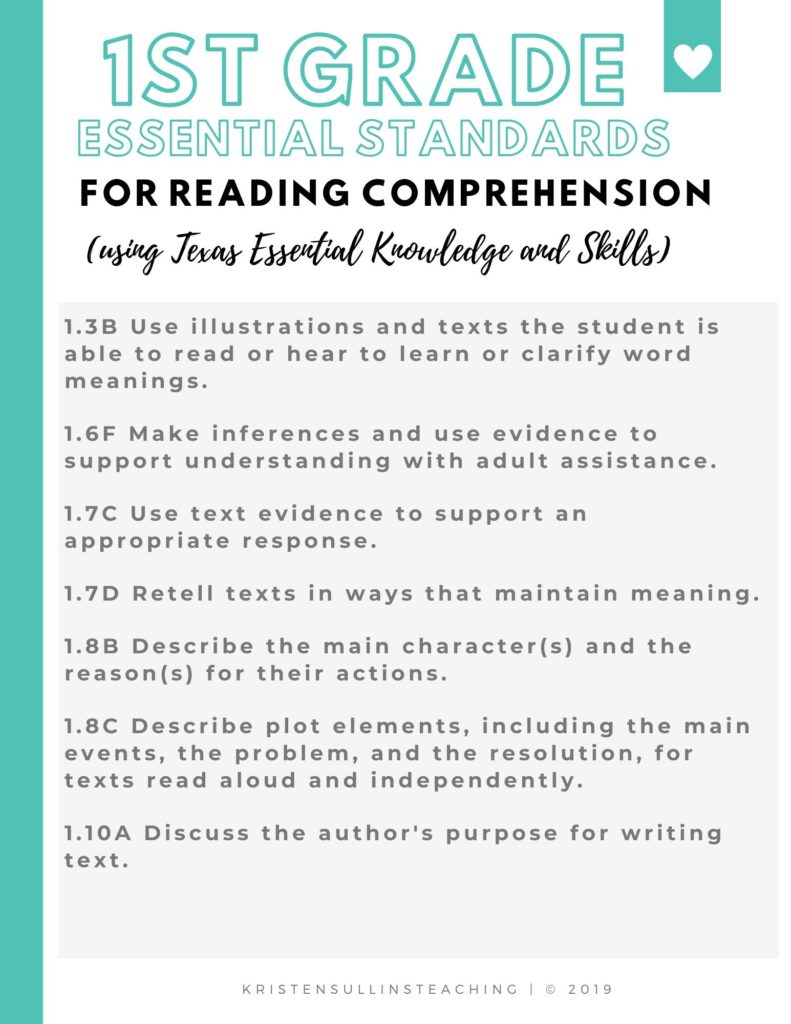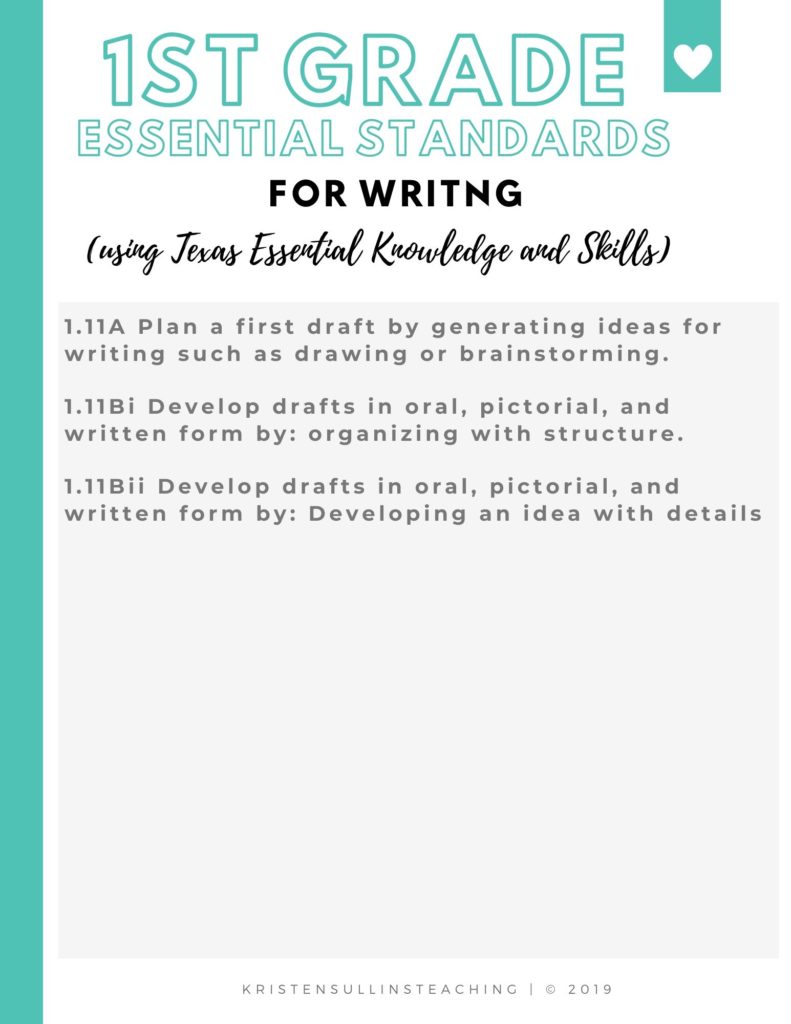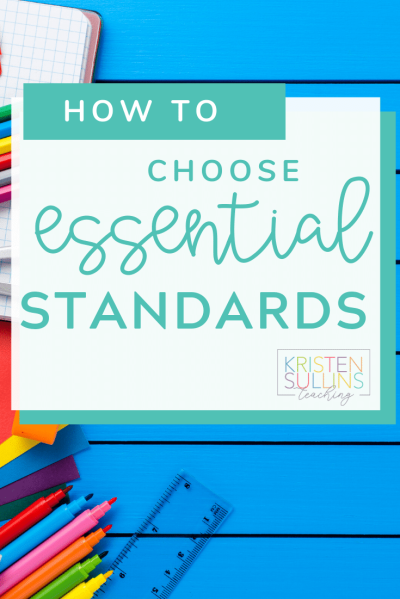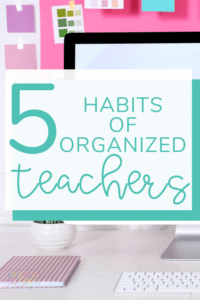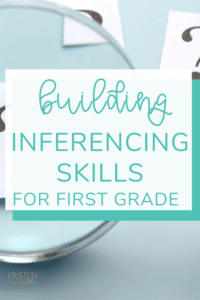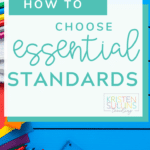How to choose an essential learning standard is not something you hear about in typical professional development sessions. But it should be.
Raise your hand if, as a teacher, you've been handed a set of academic standards and told “here, teach this”.
Only problem is, “this” is a combination of 33 reading standards (not including sub-strands) and 43 math standards. And here's the kicker… we only have 36 weeks to teach these skills!!
Here's the honest truth:
You can't teach all of your standards… and you can't teach them equally.
So how do you know what to focus on?
What standards are worth your time and energy?
Today I want to share with you the three step process that my team and I used to identify our essential learning standards.
This process takes a lot of focus and brain power and I suggest breaking it into three days, but you can take it at whatever pace you like.
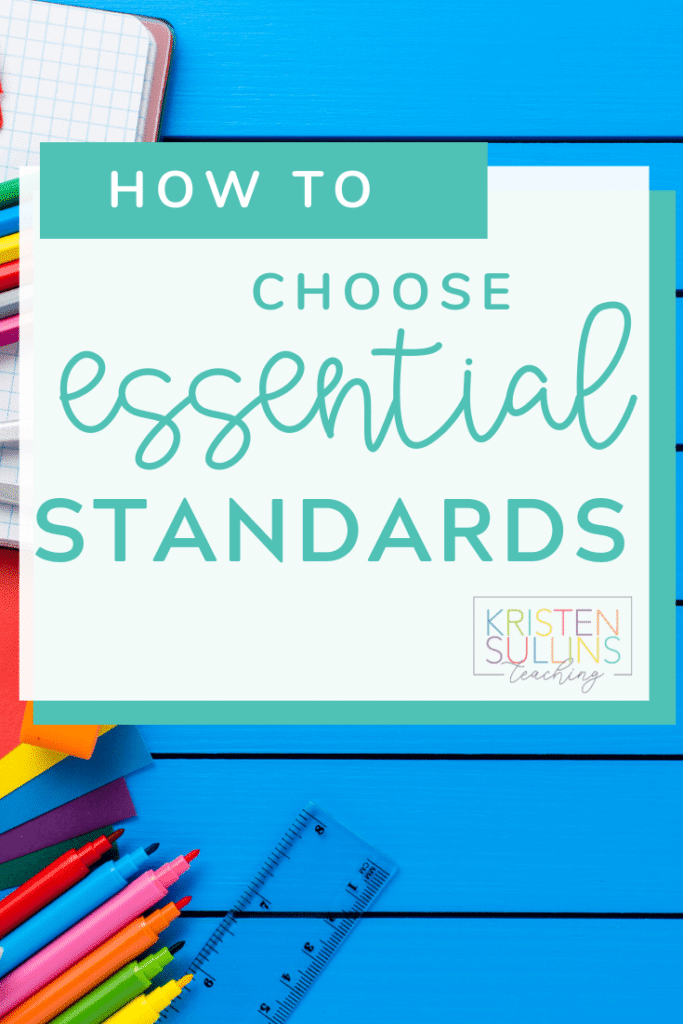
What are essential standards?
Let's clear up some vocabulary here.
“Academic standards are what public school students are expected to learn in reading, math and other subjects in each grade. Academic standards are set by individual states, not the federal government.” (Andrew M.I. Lee, JD)
Academic Standards include:
- Common Core State Standards (adopted by 42 states)
- College and Career Ready Standards (an adaption of Common Core)
- Texas Essential Knowledge and Skills
- Tennessee Academic Standards
- Indiana Academic Standards
- Oklahoma Academic Standards
- California State Standards
- Alaska Content and Performance Standards
- Next Generation Sunshine State Standards (Florida)
- Virginia Standards of Learning
Essential standards are the academic standards that you deem “essential” for a student to master before moving on to the next grade. They are:
- the core standards that you focus on with every single lesson
- the big, fundamental standards that other smaller standards lead into
- the skills that you and your team will focus on for intervention
For example, Retelling a story in a way that maintains meaning is an essential standard. Understanding how the setting affects the plot is not.
Day 1: Prep Your Materials
Step 1: Print out all of your standards for reading or math. (I suggest focusing on one subject at a time).
Step 2: Print or bookmark the standards for the grade above you. I typically don't print these, but I like having quick access to see what my grade level standard is leading into.
Step 3: Print out your current report card. The skills listed on your report card are going to heavily influence what you have to spend your time one.
Step 4: Locate example essential standards from other schools for reference.
*I suggest spending one full day on prepping your materials before you start actually digging into the process of selecting your essentials. Give yourself time to reflect and brainstorm on what you think is most important.
Day Two: Rank Your Standards
Cut all of your standards apart. Sort them into three groups:
- Must know: Students need to master this skill to be success fun in the next grade. Students should receive intervention on these skills until they reach mastery.
- Good to know: These standards are important and but typically lead into an essential (fractions lead into telling time). These are typically foundational skills.
- Teach and go: These skills should be “touched” on, but not the focus of the lesson.
This is absolutely an activity that should be completed and agreed upon by your entire team of teachers.
I strongly suggest going with your gut and adjust later.
Make sure you reference the grade level above you to see what your standard is leading into. It will give you clarity on whether that standard is really essential or not.
How Many Essential Standards Should I Have?
Limit essential standards to 8-10 per subject.
I suggest only focusing on Reading and Math standards for First Grade.
Side Note: From personal experience, if you are trying this process mid-year, your essentials will most likely reflect what is currently on your report card for grading purposes. Do what you can now, then re-adjust your report card this summer to reflect what you TRULY think your essential standards should be.
Day Three: Make Your Final Cuts
Last step is to check back over your decisions and consider a few things:
- How do these standards compare to your report card/current grading system?
- Can you identify a solid assessment for each of the essential standards you chose?
- How do these essential standards compare to the grade above you and below you? Are you aligned?
- Look at your current units of study and see where these essential units fall in your scope and sequence for the year? Are you going to have to make any adjustments?
- Lastly, make sure your admin approves these standards. I would hate for you to do all this work and then have to start over.
I would suggest find a way to communicate these standards with parents. It will give them a very clear picture of what their student should learn by the end of the year.
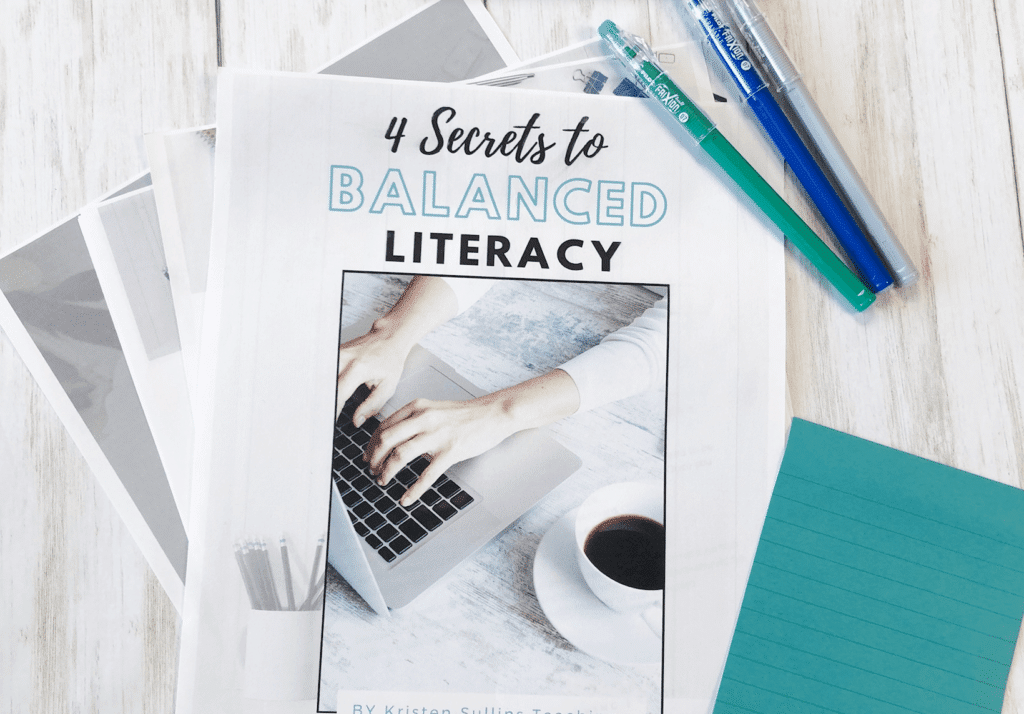
What Now?
Okay, so you have your essential standards but don't know where to go from here?
I have a few great opportunities for you:
Free E-Book on The Basics of Balanced Literacy Planning Using Your Essential Standards
Learn about my four easy steps to backwards plan an entire unit using your essential standards.
Membership to The First Grade Literacy Academy:
- Monthly Literacy Plans based on one core literacy skill sent to your inbox monthly.
- A series of training videos on how to plan for balanced literacy using your essential standards.
- Free coaching on everything from choosing your essential standards to instructional strategies and perfecting your scope and sequence.
Need a Jump Start?
Here are the essential learning standards that I use in my own first grade classroom using the Texas Essential Knowledge and Skills.
